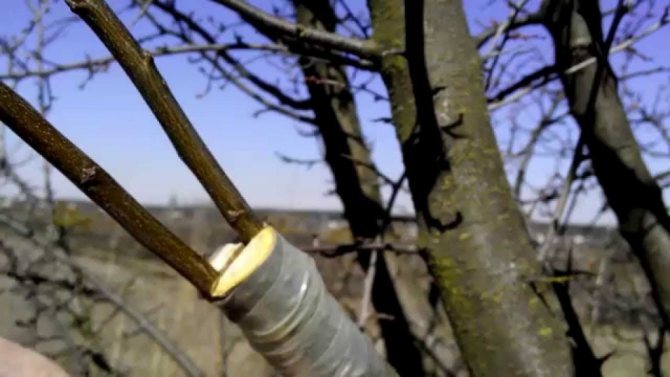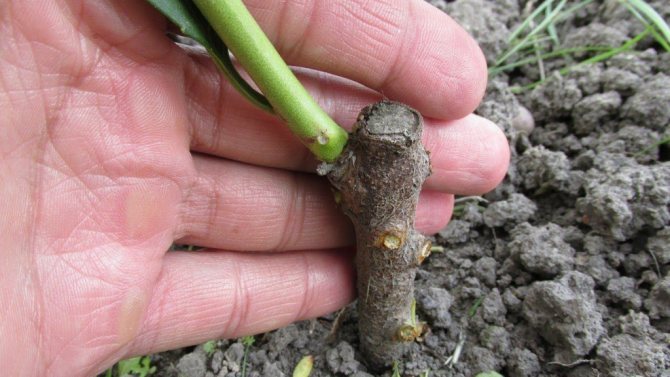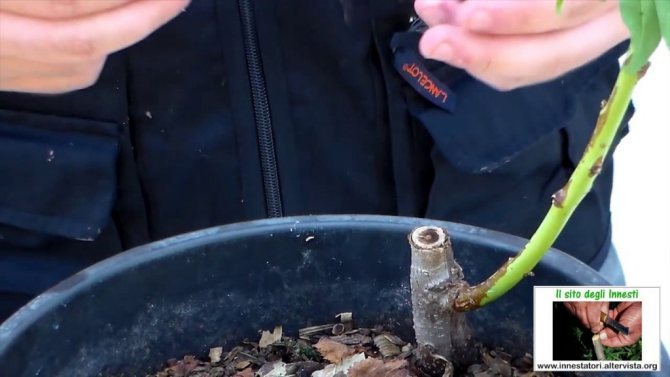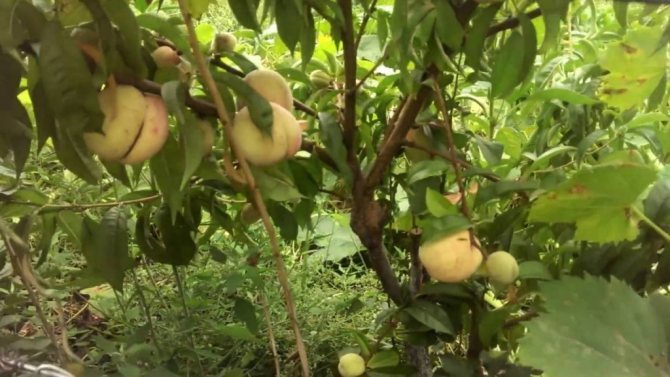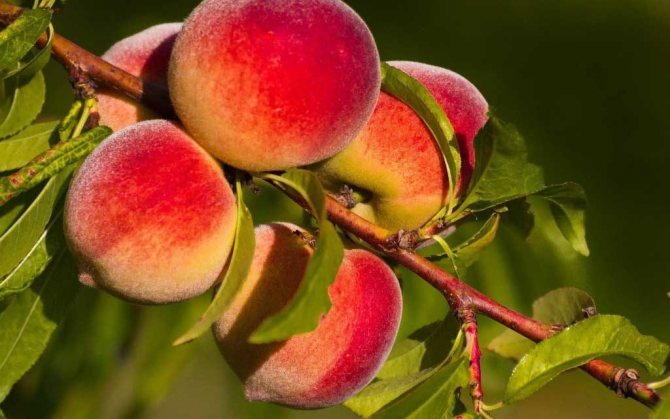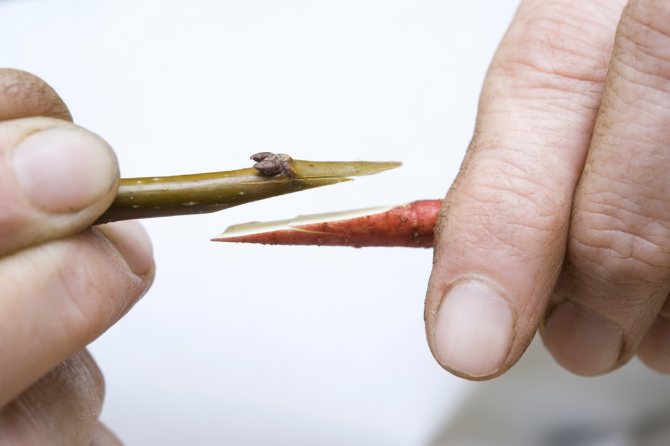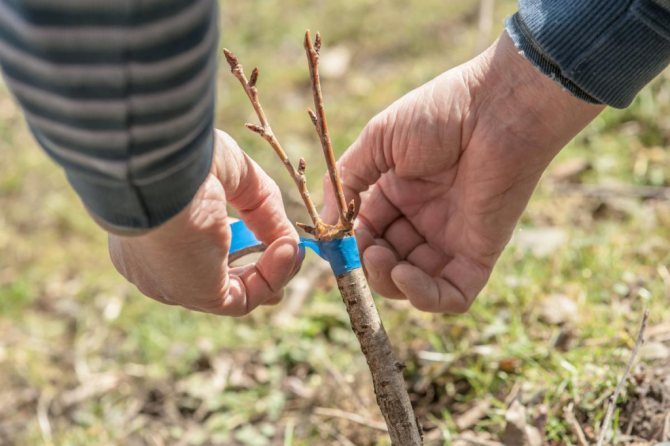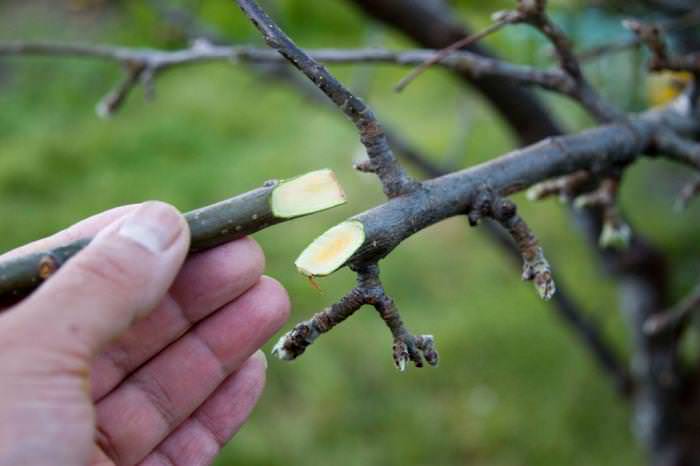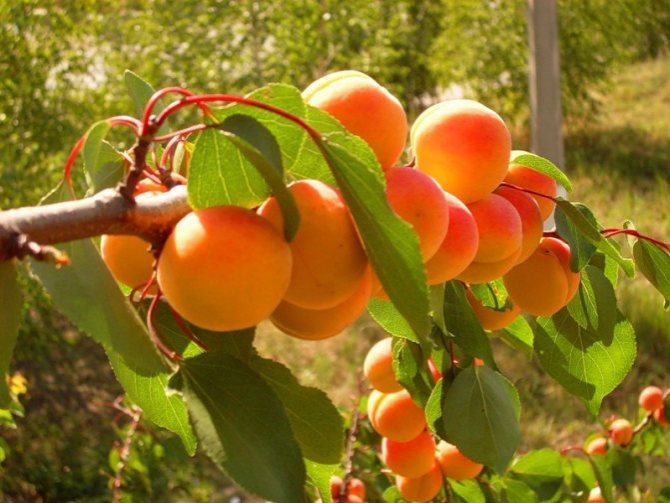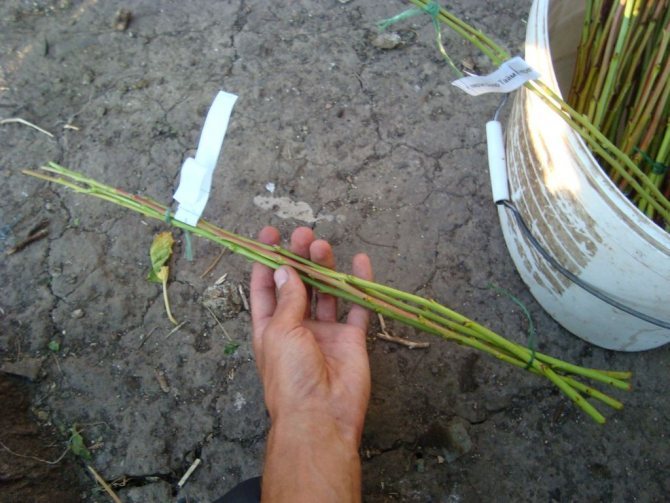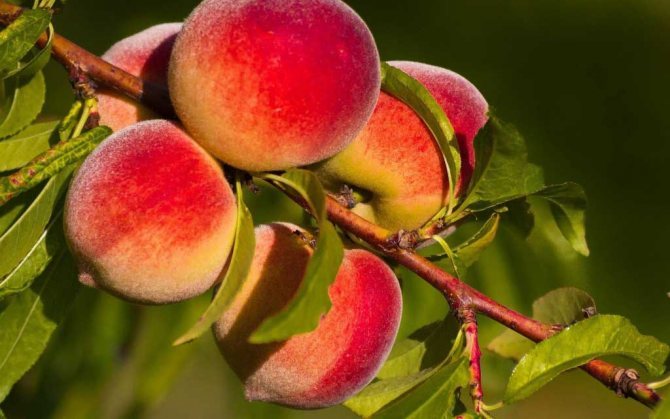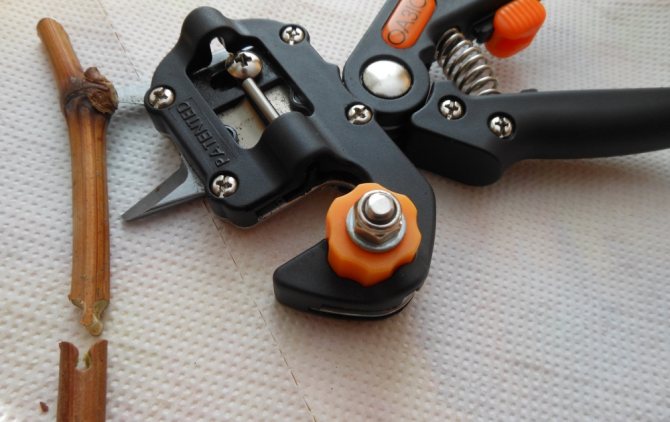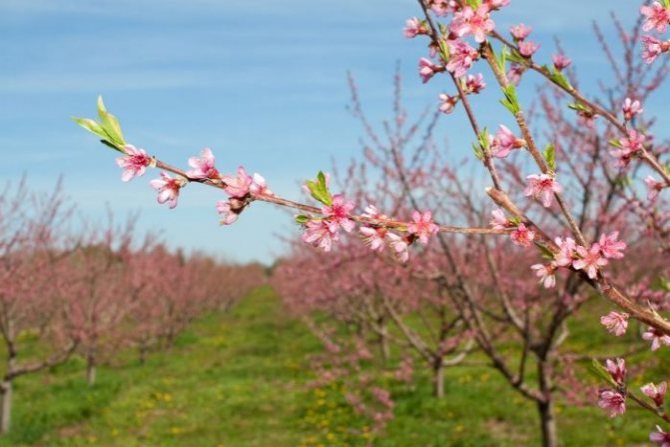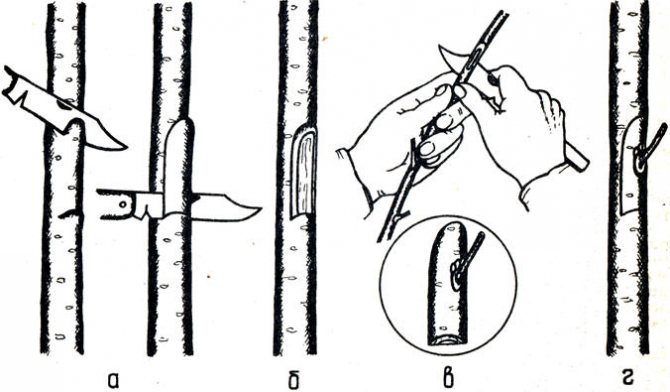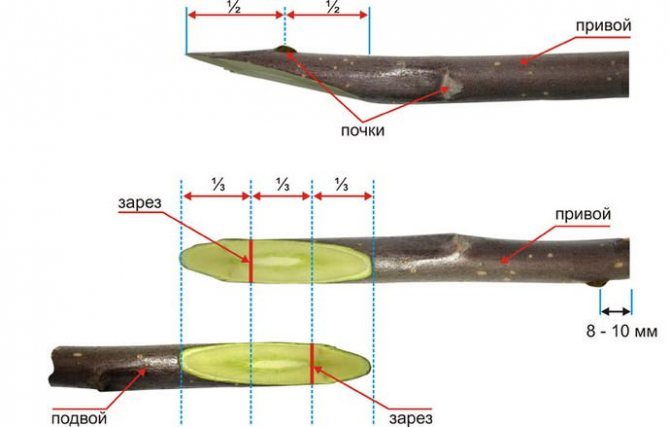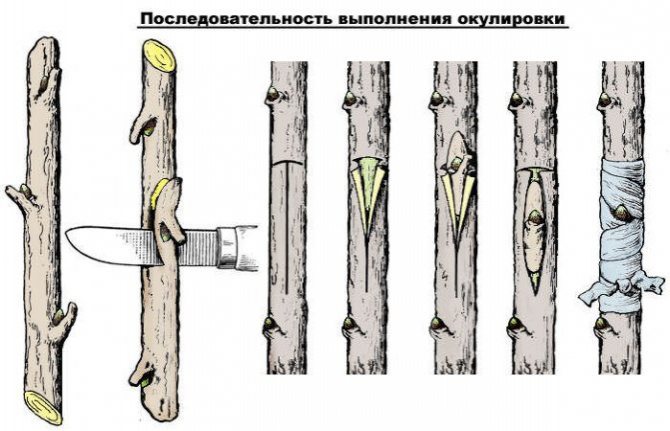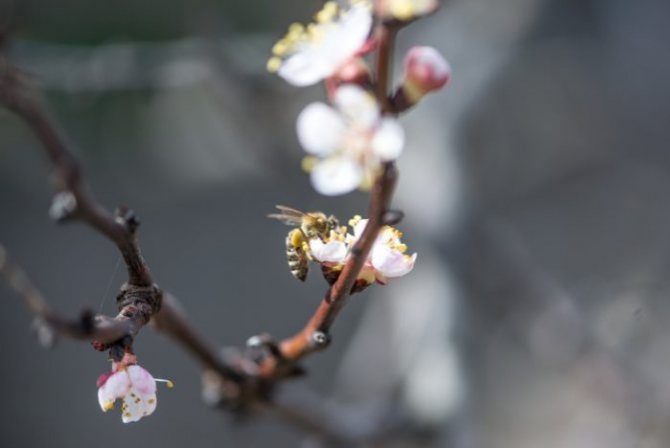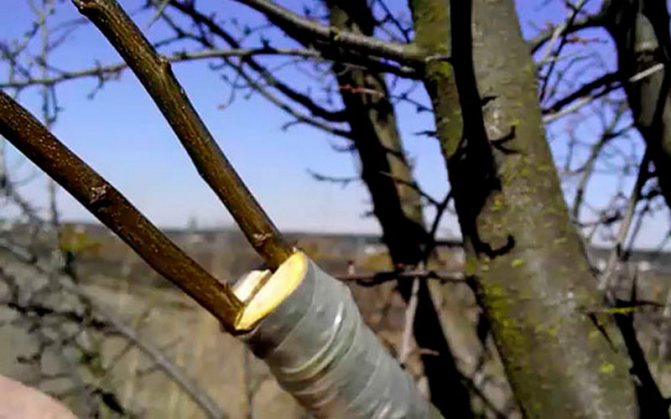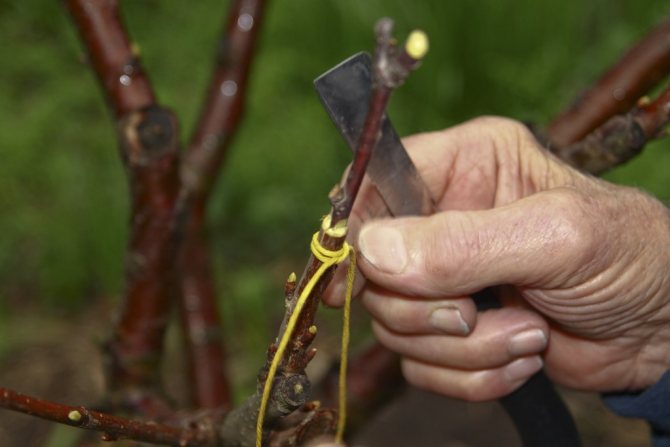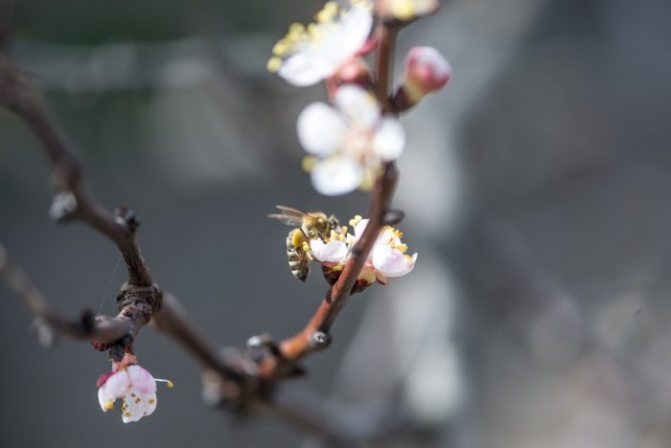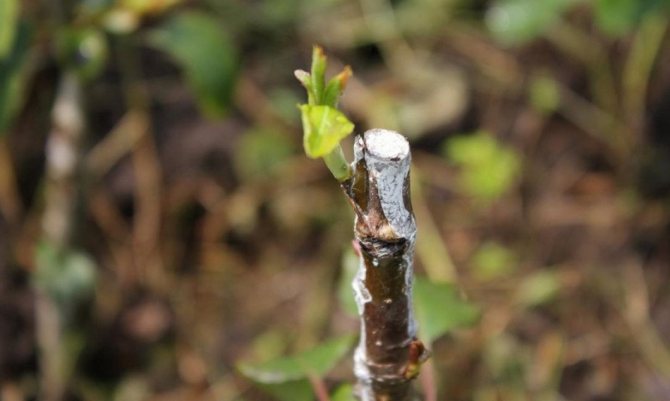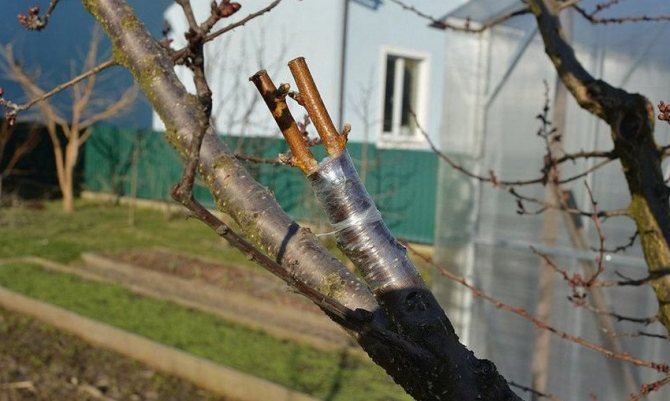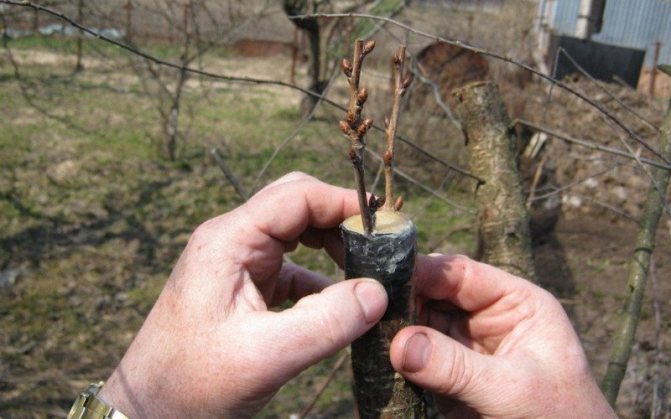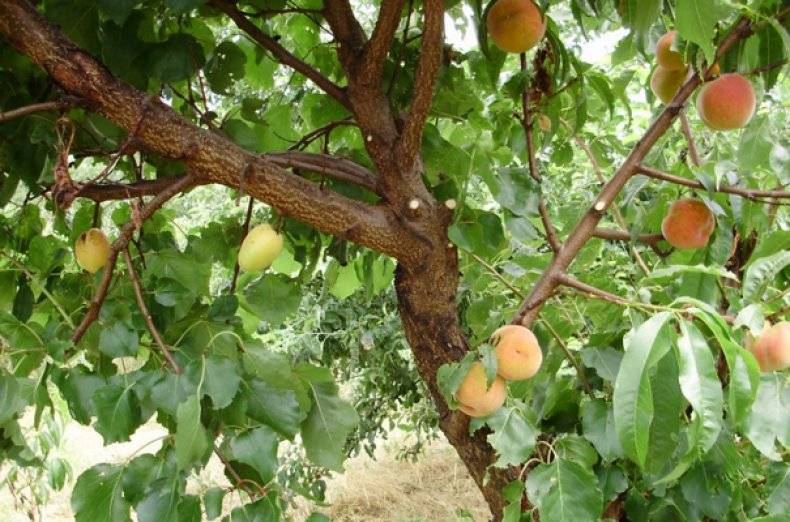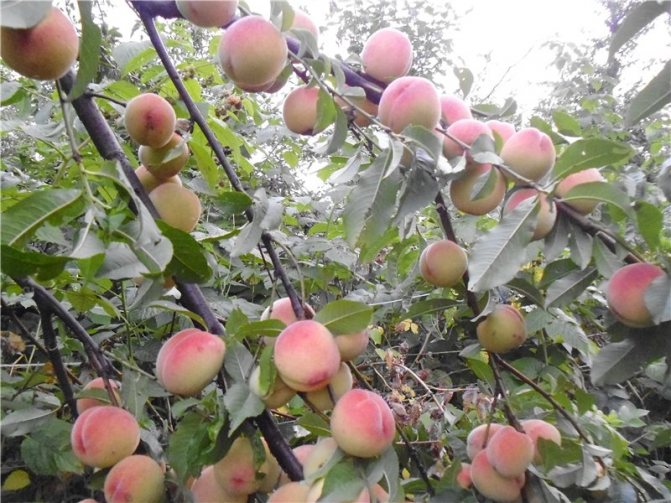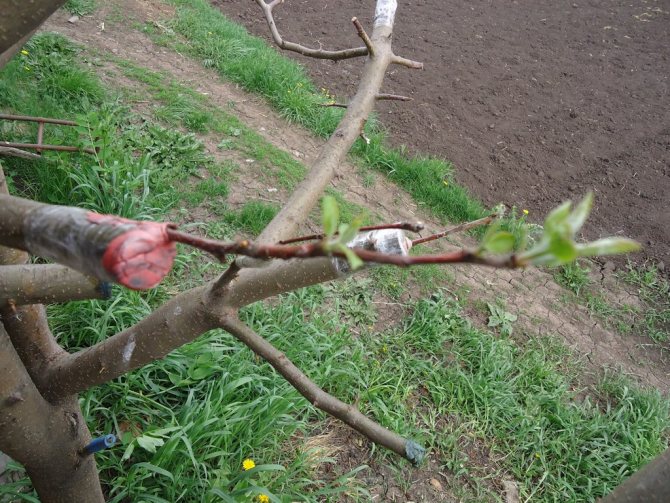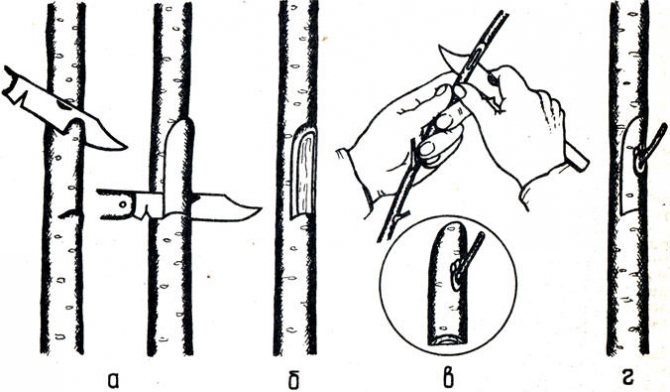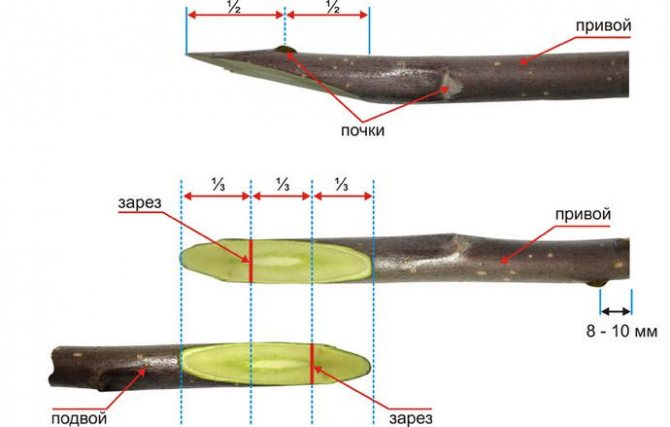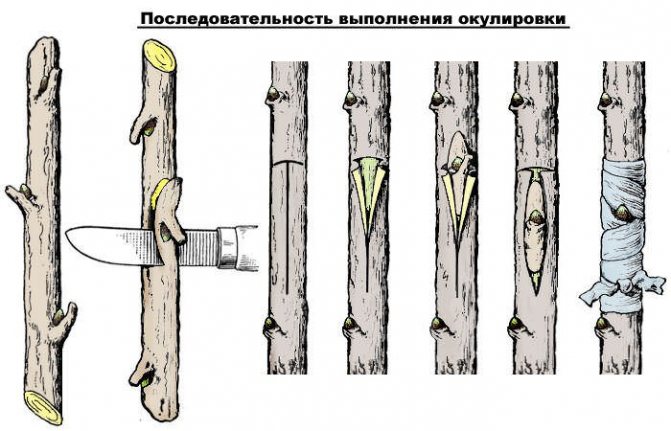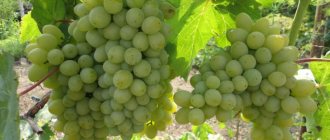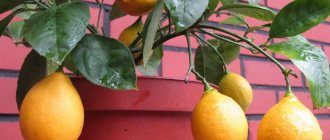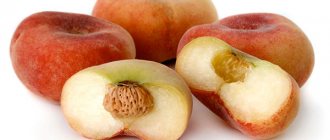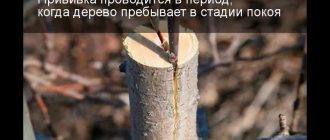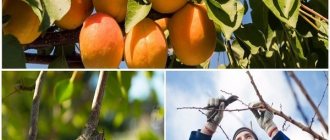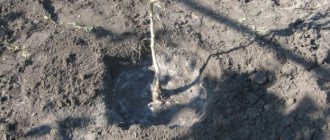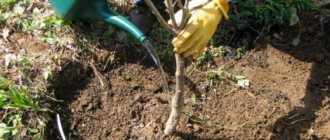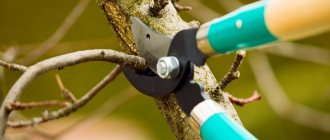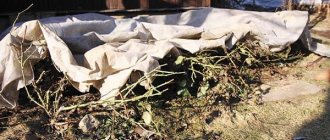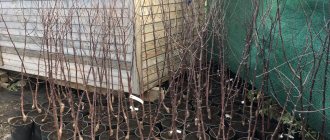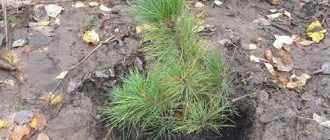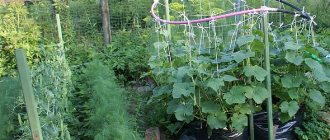Suitable dates
Peaches are planted at any time, except in winter, but with an eye on the climatic conditions of the region. Timing of work is influenced by the age of the tree and the method.
Spring
In the spring, peaches are grafted with cuttings by copulation, budding. According to gardeners, this is the best time to work. Weather and active sap flow contribute to the rapid healing of postoperative wounds. Copulation (budding) is carried out from March 10-15 to April 30.
Frost causes scion rejection. Therefore, vaccination operations are carried out after the establishment of stable warm weather. In late spring, the peach is grafted after harsh winters. It takes time to assess the degree of freezing of the stock.
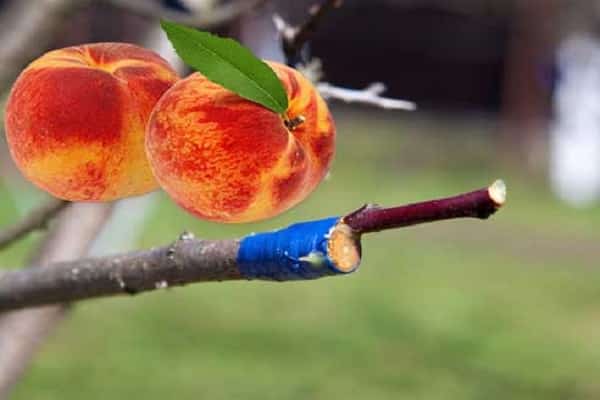
The timing of the vaccination
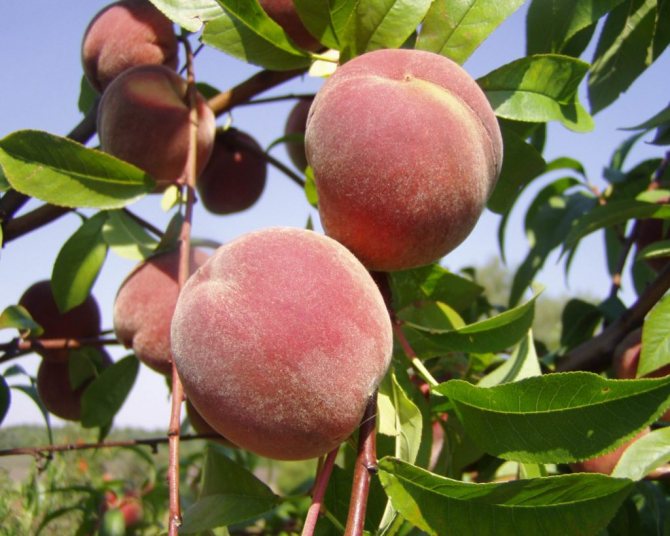

The success of the vaccination work carried out largely depends on the time of year, that is, the timing of the peach inoculation. Spring is the most favorable time for this.
Depending on the climatic zone, peach grafting in spring can be carried out from mid-March to late April, when warm weather sets in, since the conductive tissues of grafted cuttings can be damaged by recurrent frosts.
If the winter was harsh, in order to determine the degree of frostbite of the branches, it is allowed to vaccinate at a later date. It is recommended to cover the vaccination site with a plastic bag at the end of March, and a paper bag in April.
The peach enters fruiting and growing season early, therefore, it is better to start gardening procedures with it, provided that it has a safe wintering. Peach inoculation in summer is no less popular, which is divided into early summer (in the first decade of June) and summer (from late June to mid-July). It is not recommended to plant a peach in the fall: the scion that did not have time to grow will freeze during the winter.
Why is the vaccine needed?
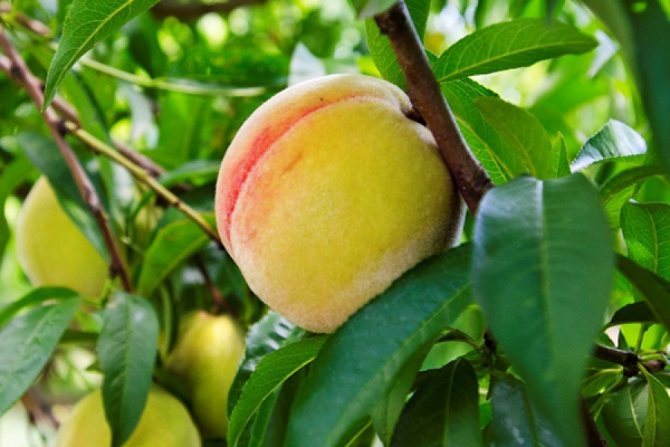

Peach is a thermophilic crop that is not always able to grow in regions with a more severe climate. The problem can be solved by grafting the shoots of a varietal tree on crops with higher endurance.
In different regions of the country, peach grafting allows to obtain high quality fruits. This procedure, in addition, contributes to a significant increase in the productive life of the crop and makes it possible to obtain several types of fruits on one tree. Peach grafting is sometimes the only possible way to preserve a rare tree.
Experts note the following main advantages of peach grafting:
- acceleration of the fruiting period;
- rejuvenation of an old tree;
- getting a large amount of harvest in a small area;
- increasing the winter hardiness of the tree;
- preservation of the specific properties of the grafted shoot;
- the possibility of breeding new varieties.
By eliminating many problems, grafting allows you to grow peaches even in regions where previously it was not possible to do so.
Tips for caring for grafted peaches
A tree with a successful grafting needs some care:
- for a month, cover the plant (or at least the place of a successful vaccination) with a light covering material, protecting it from direct sunlight;
- do not let the roots dry out by watering the tree at least once every 2 weeks, spending 15–20 liters of water;
- cut out all young growth appearing on the trunk below the grafting site;
- regularly inspect the plant for suspicious symptoms characteristic of diseases, pest attacks.
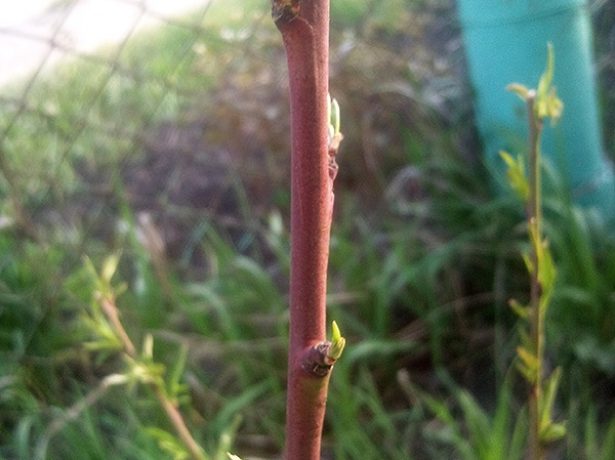

The fact that the grafting was successful is evidenced by the appearance of new leaves on the scion
Plum is one of the most suitable peach rootstocks. A competently performed procedure allows you to increase the period of the productive life of a tree, increase its frost resistance and resistance to the vagaries of the weather. The taste of the fruit is not affected in any way. In this case, the gardener requires certain skills and precise adherence to the algorithm of actions.
Grafting allows not only to significantly increase the productive life of a peach, but also makes it possible to grow several varieties of this crop on one plant at once, while obtaining a large number of ripe fruits. In addition, grafting speeds up the fruiting period, increases the resistance of the peach in cold conditions, helps to rejuvenate the old plant, while maintaining all the varietal qualities of the grafted shoot.
This agrotechnical technique allows you to grow peaches even in those regions where it was previously impossible due to unfavorable climatic and weather conditions.
However, the process of budding plants is not easy and requires certain skills and knowledge from gardeners. They must not only strictly follow the technological process and know the botanical features of plants, but have movements perfected to automatism.
When grafting a peach, seedlings of plum, apricot, almond, quince or felt cherry can be used as a rootstock, but before starting this work, it is important to determine both the budding time and select high-quality shoots for the rootstock.
Gardeners should be aware that in the case of growing peach seedlings for grafting, these plants prefer, above all, loamy and well-fertilized soils. Therefore, when using them as a rootstock, it must be remembered that the peach does not tolerate heavy and saline soils, and also does not like too gravelly and calcareous soil.
But the peach stock does not form abundant root shoots, has a rather long life span and rarely dries out.
The only and, perhaps, the main disadvantage of grafting a peach on a peach is the plant's low resistance to severe frosts and drought.
Peach grafting on cherry plum and plum
Cherry plum and plum are relatively unpretentious crops, while these plants do not have many enemies and they are rarely affected by diseases and insects. The only drawback of grafting a peach on cherry plum is the tendency of this plant to a significant overgrowth of abundant growth near the standard zone. This fact subsequently complicates the care of the culture, since all the root shoots will have to be cut from time to time in order to redistribute the process of sap flow.
As for plums, they are excellent as a rootstock for peaches, but for them you should carefully select varieties and give preference to the most hardy and unassuming plants.
Peach grafting on nectarine, apricot, almond, sloe and felt cherry
As for grafting peaches on nectarine, gardeners should remember that these two plants do not have very good compatibility and often do not take root well with each other.
The situation is quite different with grafting a peach on a wild apricot, in which the percentage of plant rejection is extremely low. Wild apricot or pole has small and very sweet fruits. The tree is quite unpretentious, therefore it grows well even in difficult conditions, while requiring minimal maintenance.
The symbiosis of the peach and the perch makes it possible to obtain a cold-resistant plant with a high yield.
In addition, the correct grafting of the rootstock and scion of these plants usually has a neat appearance, without ugly growths and sagging.
Choosing the best rootstock for a peach
The choice of the stock determines which tree will grow, its yield, ripening time, early maturity, and the size of the fruit. The table provides information on what you can graft a peach on.
| Name | Rootstock (type) | Description |
| OP 23 23 | Semi-dwarf | Hybrid |
| Spring flame | Medium-sized | A hybrid obtained from crossing the Chinese plum and cherry plum |
| Eureka 99 | Medium-sized | Hybrid cherry plum + cherry plum |
| Fortune | Medium-sized | Chinese plum + peach hybrid |
| ВСВ 1 | Weak | Felt cherry + cherry plum hybrid |
| VVA 1 | Semi-dwarf | Hybrid form (cherry plum + felt cherry) |
They are most often vaccinated on them in central Russia. Peach is often grafted onto peach. At the same time, marketable and tasty fruits are obtained. Trees on peach rootstocks show consistently high yields.
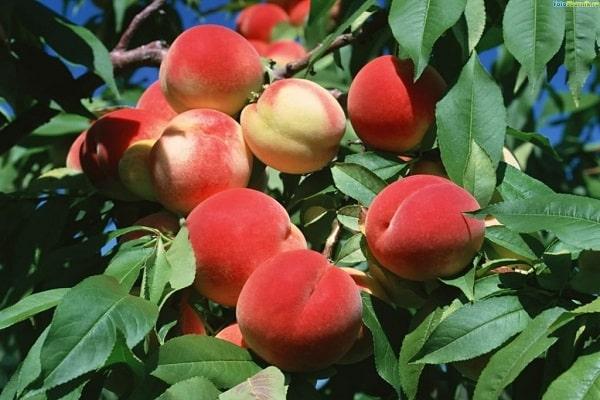

Apricot
For beginners, this type of rootstock is suitable. Experienced gardeners believe that there are no problems with survival. Wild apricots are usually used. Such a graft guarantees:
- stable yield;
- lack of influx;
- survival rate is 100%.
See also
What crops can a peach be grafted on and what should be the stock
The optimal stock (the tree on which they are grafted) for a peach is the same peach, but a more hardy variety, as well as its wild.
Traditionally, stone fruits are grafted onto stone fruits, and pome fruits into pome fruits.
The following crops are also suitable for peach grafting:
- Naturally, the peach works great apricot... Such grafting shows fairly high survival rates (vigorous stock).
- Wild bitter almond ideal for peach grafting in southern regions, due to its drought tolerance (used as a vigorous stock);
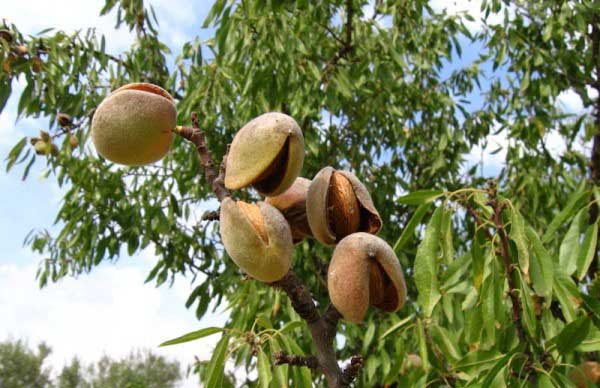

- Cherry plum it is also a good stock, because not afraid of waterlogging and is ideal for regions with frequent precipitation (medium height).
- Plum another great peach stock (medium);
By the way! Zhelezov V.K. and even considers plums to be the best stock for a peach, but apricots are a little worse.
- turn (weak);
- felt cherry (like a dim stock).
Note! According to many gardeners, 3-4 years after vaccination, incompatibility with the listed rootstocks, especially with cherry plum, may appear.
In other words, grafting on other crops is not as durable as on peach or apricot.
And then you can watch several videos about peach grafting on other crops:
Video: the result of peach grafting on apricot by budding
Video: peach grafting on almonds in spring with simple copulation
Video: the result of grafting a peach on a plum into a split
Good stock parameters
As rootstock ideally it is better to use young 1-2-3 year old seedlings, it is considered the best option for peach grafting. But older trees are also suitable (in this case, as a rule, they are grafted onto their skeletal branches, but there are exceptions), while preferably not older than 10 years.
However, it should be borne in mind that the survival rate of cuttings (grafts) on a very old bark (rootstock) has very low rates.
Naturally, in the same Middle zone (Moscow region) and other cold regions for rootstock use the most winter hardy varieties.
As for the choice of a specific branch, it is better to graft at the base of the skeletal branches, at a distance of 40-50 cm from the trunk. In this case, the rootstock should be directed upwards or strive for a vertical arrangement, since such branches grow much better, which means that the success of the survival of the cutting is significantly increased.
As a rule, annual cuttings (grafts) are grafted onto annual shoots (rootstocks), because they are of the same diameter.
Why do you need to plant peaches
Vaccination is one way of propagating a peach. Thanks to this procedure, you can harvest a rich, high-quality crop, increase frost resistance, resume fruiting and preserve rare varieties.
If the site is small, several varieties are grafted onto one scion. This will allow you to grow a tree that will yield a variety of flavors.
Peach grafting is a long and interesting activity, it requires from gardeners not only precise movements, but also compliance with the rules of execution. For the vaccination to be successful, you need to know the timing, time, choose the right stock and study the existing methods.
Valuable peach varieties can be propagated by green cuttings. This method is suitable for obtaining self-rooted seedlings. Young cuttings are rooted in a nutritious soil. The container is filled with prepared soil, the top is covered with sand. The stalk is processed in the preparation "Kornevin" or "Epin" and planted at an acute angle. To create a favorable microclimate, the container is covered with a glass jar. In the process of rooting, regular irrigation and airing are carried out.
However, most gardeners propagate the peach in the garden by grafting.
There are several ways to graft a peach:
- copulation;
- budding;
- into cleavage;
- for the bark.
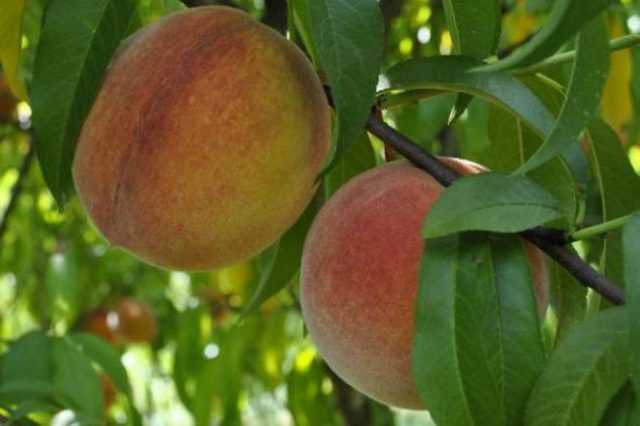

Choosing a tree for grafting plum and peach
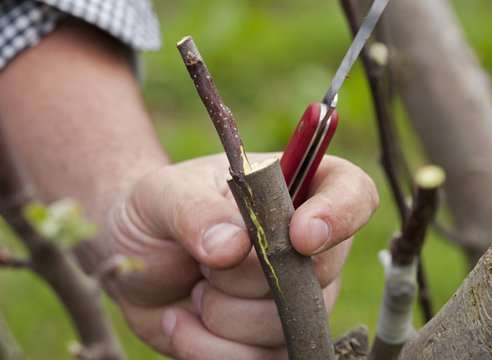

Basically, trees are grafted in the spring, using good annual or biennial thick cuttings. They are harvested at the very end of autumn before frosts, and are usually stored in a cellar or basement. When the time is right for grafting, they are moistened in water before the procedure itself. In order to have a high probability that the cutting will take root, it must be firmly fixed to the grafting site.
There is more than one way of peach grafting, but cleft grafting gives the best results. To do this, you will need to study more thoroughly the information about this method. Another very important point is that it is better to use young trees not older than five years, otherwise they may die and you will need to remove the trees. Older trees can easily disappear. As you can see, planting a peach is far from easy. In the best case, not all of the rootstock will take root, but with a careless grafting procedure, the tree may even die.
At the beginning of the question - what and what can be grafted into, you need to learn the main rule on which the result of your work depends: the stock procedure must be carried out with healthy cuttings on a young and healthy tree.
Preparing cuttings


Since peach grafting is best done in spring, cuttings should be harvested in autumn or at the very beginning of winter, until frosts come below -7-12 ° C. For grafting a peach, 1-2-year-old mature strong growth shoots with a length of 30-40 centimeters are chosen.
Weak and thin branches have a rather low probability of survival. It is best to cut off a healthy tree on the south side of the crown. Cut them in the morning or evening, but not during the day.
After removing the sheet plate, the stem is placed in the lower part in a plastic or glass container with a small amount of water in order to maintain a turgor state. Cuttings purchased outside the site or region should be kept in a damp cloth to prevent drying out. It is recommended to store them in the snow or in a cold basement in the sand until grafting.
For storage in the snow, cuttings by varieties are tied into small bunches and, placed in tight polyethylene bags, are snowed, that is, covered with a layer of snow of at least 55-65 centimeters.
To maintain the temperature on top, the snowdrift is mulched with a layer of sawdust or peat. This snow drill is recommended to be done in the northern part of the site in order to delay the melting of snow as long as possible. The optimum temperature for successful storage of cuttings is -3-5 ° C.
Suitable for storage and any other dark place: basement or cellar. Cuttings are brought into the house in March and placed under the freezer. The wood of well-preserved shoots should be smooth and the buds not darkened. Cuttings can be harvested just before vaccination: the night before or in the morning.
Cuttings prepared in the evening should be wrapped in moist material, put in a bag and put away in a cool place.
Scion preparation
Suitable for the stock are 2 summer shoots without flower buds, about half a meter long. They are cut in the fall, after leaf fall, from the southern part of the crown. In weakened, thin shoots, the survival rate is low, so cuttings with a diameter of 5-10 mm are suitable for the scion. It is better to cut them from a healthy tree in the morning or evening.
The cut cuttings are tied, wrapped in a damp cloth, placed in a plastic bag and placed in a refrigerator or basement, where the air temperature will not exceed + 2 ° C. In well-preserved cuttings, the wood should be smooth and the buds not deformed. Before grafting, it is better to check the viability of the scion, if it bends and does not break, then it is suitable for subsequent work.
Advice! Cuttings can be cut just before grafting.
What tools and materials will be needed
The operation must be done quickly with sharp, clean instruments. For a good result, cuts need smooth ones without burrs, chips and fringes. Gardeners use the following set of tools for peach grafting:
- secateurs;
- knife;
- hacksaw for wood (for old trees).
Of the auxiliary materials, you must have at hand: PVC film, electrical tape, gauze (bandage), garden pitch, newspapers. The paper is needed in the summer in order to cover the vaccination site from the hot sun rays.
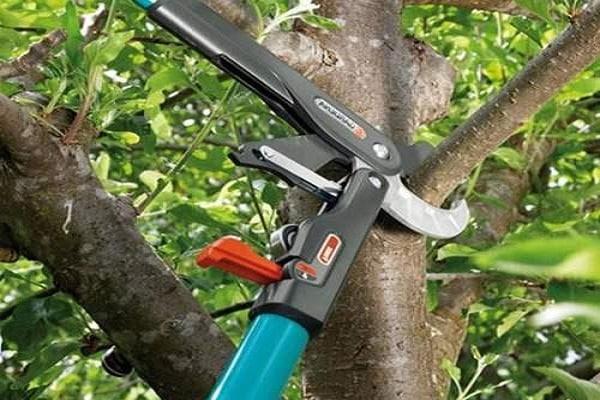

Experienced gardeners, who often graft fruit and stone fruit crops, purchase special garden pruners. They are not cheap, but they allow you to make even grooves of the desired shape and size.
Peach grafting on apricot, plum and cherry plum
The best result will be obtained by grafting between representatives of the same varieties. It follows that the best stock for a plum will be a plum, the accretion of cuttings will be very high, because they are representatives of the same variety. Biologists, in the course of their various studies and experiments, were able to prove that the plum was obtained by crossing cherry plum and blackthorn. As you know, cherry plum is a very good stock for stone fruit trees, sweet cherries and cherries are an exception, therefore, plum cutting will also have a high chance of taking root on cherry plum. The people call the thorn the prickly plum, which, as it were, confirms its relationship to the genus of the plum. It has good frost resistance and is unpretentious, so the plum stalk will take root well on the thorn. An apricot can also serve as a quality stock, it is important to carefully choose a place for the stock. It is necessary to avoid places affected by polypores. From the above, we can conclude that it is quite possible to plant a plum on an apricot tree, which cannot be said about crossing a plum with a cherry. The chance of survival of the rootstocks is very small, since the varieties of these trees have a strong difference.
Be the first to comment
Looking forward to your first comment.
How to graft a peach with a bud?
The first thing to do for grafting in the application is to find a peach stalk. At the beginning of spring, you can cut it from a tree or prepare it in the fall - the main thing is that there are “live” buds on the branch. Now you need to find the stock. It can be any tree, but preferably a young one, since it is on 1-4-year-old trees that the scion takes root best.
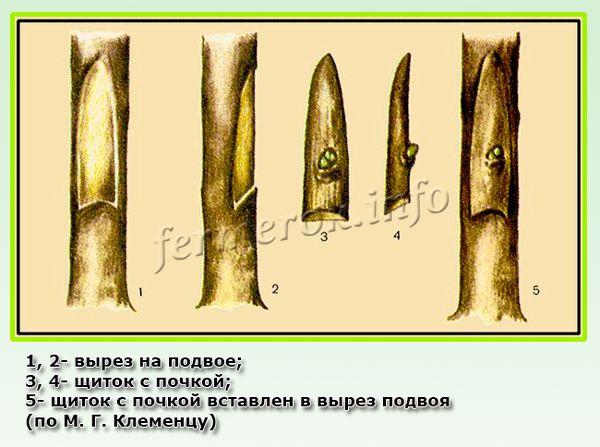

Spring grafting with a kidney
After a tree has been found and a stalk is available, the peach itself is grafted in the spring. To begin with, on a young branch or tree trunk (the thickness should be approximately equal to the cutting), you need to make a notch - the top layer of bark with wood is simply cut off in one place - in an even, smooth movement. The largest and healthiest bud is looked for on the cuttings, and it is cut along with the bark and wood. You should get a long strip with a kidney. A peach bud is applied to the cut on the tree (they should be approximately the same in shape and size) and wrapped with tape, tape or gauze.
After about 2-4 weeks, you can remove the bandage - the kidney should completely engraft. And for the winter it is worth covering the place of the scion with a bag or something similar. If the graft is located close to the ground (at the base of the tree on the trunk), you can simply spud the tree so that the ground completely covers the rootstock.
How to plant a peach apricot in spring
Most often, the tree is grafted in the spring using suitable annual or biennial cuttings. Choose good, thick branches. It is very unlikely that those that are thinner in size than a pencil will take root. It is also necessary to take into account the fact that a peach should be grafted onto a young tree, the age of which does not exceed five years. An older plant can simply be ruined.
To plant the peach, cut the stock to the desired height. The bark should be without a knot or hitch, without kidneys. Such that it was possible to make an even vertical incision of 3-4 cm in the bark. Some gardeners make a semicircular or T-shaped cut at the site of future grafting. After the cut, we take a sprig (stalk) of a peach, preferably last year's growth, and place it in the cut. The main thing is that the branch does not have flower buds. We do everything quickly so that the twig does not get weathered. After the entire procedure, we tightly wrap the vaccination site with electrical tape. Some gardeners use medical adhesive or cloth tape. Already on the first day, it is clear whether the vaccination was successful or not. If the leaves do not wither or dry, then everything is done correctly.
Fresh articles about garden and vegetable garden
Salting cabbage in February 2020 according to the lunar calendar
How to treat pepper seeds with hydrogen peroxide before planting seedlings?
Processing pepper seeds before planting seedlings with potassium permanganate
Common grafting methods
There is no need to come up with new methods of peach grafting. The methods have been known for a long time, they just need to be mastered. Any variety can be propagated by green cuttings. This vegetative method grows own-rooted peach seedlings.
Cuttings are rooted in a substrate consisting of compost, soil from the garden. They fill the container. The top layer is sand. The planted stalk is covered with a 1 liter transparent jar. Care comes down to watering and airing. After the roots are formed, the seedling is planted in a greenhouse or garden bed.
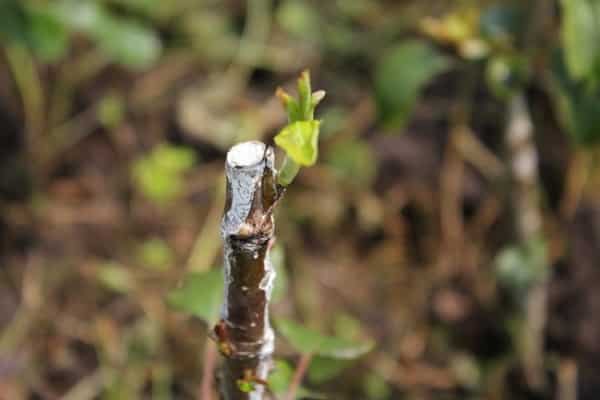

Improved copulation
This method guarantees a high survival rate. Improved copulation is carried out in the spring from late March to mid-April. We need 1-2-year-old shoots of the same diameter.
Slices on the scion and rootstock are made at an acute angle (30 °), of the same length. It should be equal to 3 diameters. The upper part of the cutting is cut at right angles. 3 or 4 buds are left on the scion.
To increase the area of contact at the corners of the cuts, longitudinal cuts are made with a length of about 10 mm. The resulting tongues wind up behind each other. The docking place is wrapped with electrical tape, covered with garden pitch.
See also
Process technology
One of the simple and quick options for how to pinch a crop is the method of grafting into the cleft with a cuttings.
Learn how to prune your peach properly in the spring.
Process technology:
- A healthy stalk is cut to a length of 15 cm.
- A straight cut is made on the stem of the stock at a distance of 30–40 cm from the soil surface.
- The edge of the cut is tightly wrapped with adhesive tape along the bark of the trunk, but the cut remains open for now.
- On one side of the trunk, an incision is made between the wood and the bark with a sharp garden knife.
- The stalk is cut on one side, forming a sharp flat wedge, 1.5–2 cm long. The bark on the back of the wedge is also cut off.
- Above the cut in the stock made earlier, place the scion vertically and gently drive it into the slot of the cut.
- The same manipulation is carried out again, opposite the first scion cuttings.
- Sections and the trunk of both cuttings are treated with prepared garden pitch.
Video: peach grafting
Useful Tips
Grafting a peach is not difficult, the whole process takes no more than half an hour. It is much more difficult to wait for visible results of work. Here are some tips you can follow to make your vaccine more effective.
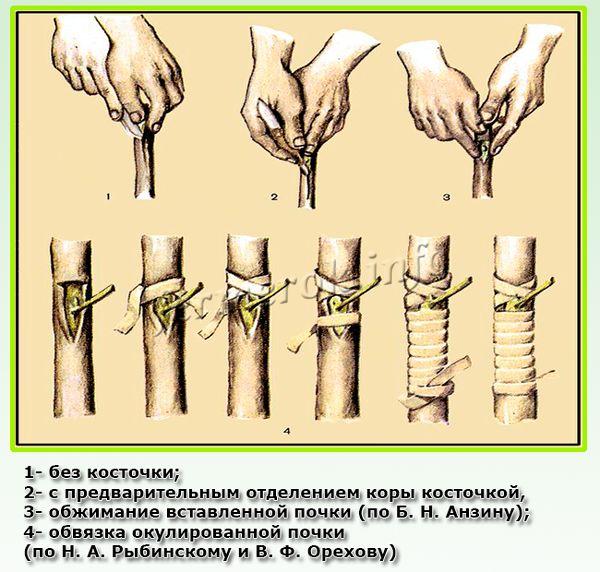

Inserting a bud on a stock
- It is worthwhile to carefully monitor that the cuttings are of the same diameter as the rootstock branches on which they will be grafted - the greater the coincidence in the diameter of the scion and rootstock, the higher the chance of survival.
- If the cuttings for grafting are harvested in the spring, then they need to be cut in March-April - before the leaves bloom. And such cuttings are grafted immediately.
- Grafting a peach in spring requires precision, so it is worth practicing first with the method that the grower has chosen on simple sticks, and only then practice it on real cuttings.
- Do not touch the cut on a tree or handle with your fingers, and the tool must be clean. Touching the cut can introduce infection into the tree!
- Cuttings, buds and trees to which the grafting is carried out must be absolutely healthy. They are examined thoroughly before the procedure to avoid further problems.
- Peach grafting is best done on trees less than 10 years old.
- The ripening dates of the fruits of the peach and the stock (the tree to which it is grafted) must coincide!
Is it possible to graft like this: how suitable is a plum for a peach as a stock
If you decide to plant a plum on a peach, choose the most unpretentious, hardy and frost-resistant varieties. These are, for example, any varieties of Hungarian plum (Donetsk, Italian). An unsuccessful option is the rather capricious Anna Shpet. The age of the tree is important (preferably up to 10 years), as well as the ripening time of the fruits (they must coincide in the scion and rootstock).
Plum resists diseases better than peach, less often it is attacked by pests. The only significant drawback of such a rootstock is the tendency to abundant formation of root growth. It will have to be destroyed regularly so that the yield does not suffer.
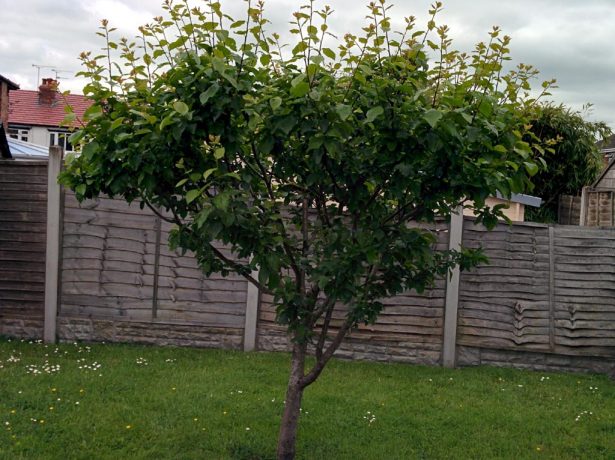

Plum grafting provides the peach with a higher frost resistance, the tree suffers less from diseases and pests
The taste of peaches after vaccination does not suffer in any way. Therefore, for central Russia and other regions with a temperate climate, plum is one of the most suitable rootstocks for peach. Trees belong to the same family (Rosaceae), this leads to a high percentage of successful grafts if done correctly.
Taking care of the tree after grafting
The cover dressing is removed after 4 weeks. The site of operation is coated with a layer of var. Here are some things to do to help the tree cope with the stress of grafting:
- control the soil moisture in the root circle, water it at least once every 2 weeks, spend 1-2 buckets of water per tree;
- control the appearance of growth below the vaccination site, it is regularly cut out;
- they inspect the aboveground part, treat it with insecticides, fungicides in case of detection of pests, symptoms of a fungal disease.
At first, budding gardeners make mistakes. They work with a dirty, not sharpened tool. They do not follow the necessary rules for caring for the grafted tree. They forget to remove the winding in time, do not cover the place of operation from the sun. Budding is done on the south side of the trunk. There will be no problem if you avoid repeating these mistakes, strictly adhere to the correct technology.
What can you plant an apricot on
The success of the vaccination is possible only if the procedure is carried out in a timely manner and using high-quality material. Experts say that the most effective vegetative propagation of apricot by shoots and buds using intraspecific donors - plum, cherry-plum, blackthorn or apricot.
Intraspecific vaccinations - for apricot, plum, cherry plum
The most common and most effective grafting option is apricot on an apricot stock. Experts recommend choosing a frost-resistant and unpretentious Manchu apricot or a zherdel (semi-wild apricot) as a mother tree. Of the modern varieties, Uralsky, Chemalsky white, Pogrebok and others are considered the most suitable. Experts of the Voronezh Association of Gardeners advise using Pumiselekt and Alab-1 as dwarf rootstocks.
Video: grafting apricot on apricot
Plum and cherry-plum are closely related crops for apricot, their cuttings for grafting are quite suitable. It is important to select zoned and acclimatized varieties of cherry plums and plums. Any type of vaccination is suitable for vegetative propagation, including those discussed above.
Some gardeners recommend covering the grafting site for a time (for 1.5–2 weeks) with a film - this allows you to create a microclimate, temporarily protect against bacteria and improve the survival rate of the scion.
Video: grafting apricot on a plum
There are cases when an apricot was grafted onto a peach - the accretion of the grafted parts is pretty good. But since the peach is a thermophilic culture, it is often the other way around - the peach is grafted onto an apricot, thereby increasing its winter hardiness.
An apricot scion grafted on cherry plum almost always takes root, the apricot fruits in the future, according to gardeners, are larger, but with sourness.
Rules and recommendations for the peach inoculation procedure
- It is imperative to observe the compatibility of trees (rootstocks and scions) with each other.
- Perform the operation (vaccination) at the correct time and under favorable weather conditions.
If you are planting in early spring, the weather should already be warm, but not dry and hot. There should be no rain a few days before the day of the vaccination.
- The vaccination procedure itself is best done in the morning.
- It is better to choose the place for grafting (on the rootstock) from the north side, in order to subsequently avoid direct sunlight (then you will not have to shade).
- Before carrying out the operation, be sure to wipe the graft site (rootstock branch) with a cloth.
- The success of the grafting largely depends on how smoothly you cut the cuttings (scions). They should be perfectly smooth, without any bends or roughness.
By the way! As a rule, the length of the bevel cut should be 3 times the diameter of the cutting (scion).
- The diameter at the grafting site at the rootstock and the scion should ideally be the same. However, if the stock is thicker than the scion, then in this case you need to move the scion to one of the edges, thereby aligning the cambial layers.
Note! It makes no sense to use a scion of a larger diameter than the rootstock, as well as to put a smaller scion in the middle of the rootstock. in this case, there will be no contact of the cambium, which means that the vaccine will simply not take root.
- It is necessary to carry out the operation quickly so that the surfaces of the sections do not have time to oxidize and dry out.
- During the vaccination procedure, in no case should you touch the slices with your hands, so as not to accidentally introduce an infection.
- The same applies to the instruments used: they must be not only sharp, but clean (disinfected), otherwise an infection may get on the cut.
- The vaccination site must be wrapped as much as possible (optimally with a polymer film, but you can also use electrical tape or special tape) and cover the open parts of the graft and the cut off top of the cutting (scion) with garden pitch.
This measure is necessary to protect the vaccination site from drying out, as well as to isolate it from the ingress of air and moisture.
Some gardeners, for better adhesion, put a plastic bag (bag) on top of the graft, but this is not necessary at all, because it is much more important to tightly fix the vaccination site with tape.
- Do not ignore the rules of caring for a grafted tree, otherwise it may reject the cutting.
- Remember, any grafting is a risk of not too strong fusion, especially in the early years, so it is advisable to drive a peg next to a tree and tie it to it.
Vaccination tools
- grafting knife (also called budding knife);
- or grafting secateurs;
Of course, you can use the usual pocket or clerical knife, but it must be very well sharpened.
- plastic tape or electrical tape;
Ideally, this is a special film that itself is destroyed under the influence of ultraviolet rays (i.e. it does not have to be removed).
- garden var.
Answers to popular questions
Several answers to popular vaccine questions.
In the future, the paragraph will be supplemented.
Is it possible immediately (on the day of grafting) to cut the cuttings and graft in the spring?
It is undesirable, since in spring, in warm weather, the stalk will quickly grow, not having time to take root. The kidneys will draw out all the juices from him, because of which he may die. In other words, if the buds begin to bloom before the graft takes root, then the stalk may simply dry out, since the buds will take all the nutrition from it.
Alternative opinion! However, many gardeners successfully plant cuttings that are cut right on the day of grafting. Of course, subject to access to the donor tree.
The main thing is that the kidneys do not wake up yet.
Moreover, the survival rate of such grafts can be much higher than from cuttings that have passed through storage (due to improper storage conditions, their quality could deteriorate).
When can you cut the cuttings right away?
Always with summer vaccination, namely budding (peephole vaccination).
Why is it best to harvest cuttings in the fall?
The fact is that the cuttings that you prepared in the fall and stored in the cold will definitely be in a dormant state during vaccination. Thus, tissue fusion will occur before the kidneys begin to wake up.
In addition, in a harsh winter, there is a possibility of freezing of the donor's kidneys, which will worsen the result of the vaccination. In addition, in winter, and especially in early spring, nutrients are consumed, which also affects the result.
Vaccination methods
The most effective ways of peach grafting are:
- budding the shield in the crown;
- budding in the butt;
- copulation;
- improved copulation.
The gardener should remember that in any of these ways, the success of the work will depend on the smooth execution of the bevel cut of the cuttings. It should be perfectly smooth, without roughness or any bends. This will require a sharpened special grafting knife. The oblique cut should have a length 3 times the diameter of the cutting.
Budding
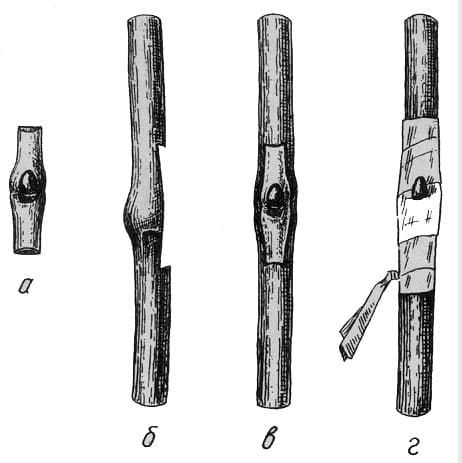

Instruction for budding
Crown budding is carried out in June-July. The optimal time for regions with high humidity is the end of August. For budding, you will need a shield taken from a young shoot with a bud 2 centimeters long (1 centimeter below and above the bud). Using a sharp knife, a T-shaped incision is carefully made on the bark. Before inserting the shield with the kidney, the bark is carefully pushed apart. This work should be done with precise and quick movements.
It is better to vaccinate in the morning, with high humidity. The vaccination site must be wrapped with plastic wrap, and the kidney must be left open. After a month, the harness can be removed. During this period of time, the scion usually has time to take root. If there is a prolonged heat and drought, the tree is watered abundantly 1-2 days before budding.
For 2-3-year-old trees, budding in the butt is suitable, which can be carried out in autumn, spring and summer. To carry out the vaccination, you need to take a stalk, cut off a shield 3-3.5 centimeters long from it with a kidney located in the middle of this segment.
On the rootstock, a strip of bark with a thin layer of wood, equal to the length of the shield, is cut from top to bottom.Having shortened the resulting strip, a small part of it is left below (about 1 centimeter) and a shield is brought under it so that it takes the place of the removed cortex. A polyethylene strip is tied tightly around the vaccination site.
After a month, the polyethylene can be removed and the branch cut just above the graft site to stimulate the germination of the grafted buds. The cut must be treated with a garden pitch. The petiole on the established scutes soon disappears. Oculating in the butt is carried out in the morning and evening hours, since the shields dry out quickly in the heat of the day.
The budding of the flap in the crown and in the butt is referred to as summer peach grafting, which is performed from late July to mid-August.
Copulation
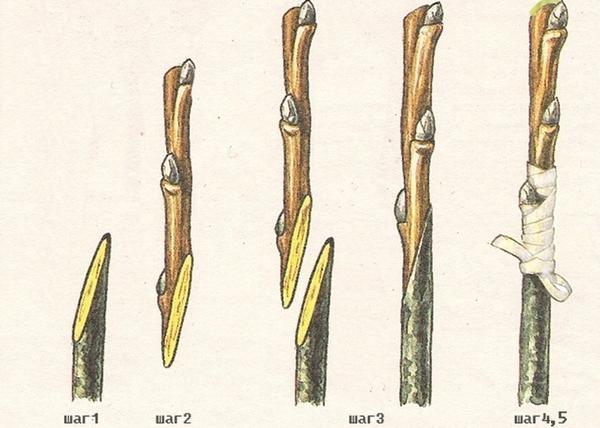

For improved copulation, scions and rootstocks of the same thickness are used (the permissible difference in diameters is no more than 25%). On the scion and rootstock with such an inoculation, make oblique cuts, called "tongues". These sections should coincide as much as possible, providing a better connection and quick accretion of the cambial layers.
Having stepped back from the upper end by a third, a longitudinal incision 1-1.5 centimeters long is made on the scion cut. A similar work is carried out with the stock, stepping back from the end of the cut also by a third.
In this case, the blade must be guided at the same angle at which the "tongue" of the scion leaves. Connect the scion and stock so that their "tongues" are equal. All components involved in improved copulation are tightly pressed and wrapped with foil.
After the cutting has taken root and leaves appear on it, you can tie it to a peg. When the stalk reaches a length of 20 centimeters, the harness must be removed. In this way, copulation can be carried out in the summer and spring.
How to plant a peach on cherry plum?
On waterlogged, heavy and saline soils, peach grafting should be carried out on cherry plum. Semi-wild small-fruited cherry plum is the best stock on any soil, it is practically not affected by parasites and diseases.
Peach trees grafted on cherry plum begin to bear fruit early, reach medium-sized fruits that are convenient for harvesting, and give annual high yields. However, not all peach varieties are combined with cherry plum. For this, the most suitable varieties are Kievsky, Kievsky early, Superearly.
Some experienced gardeners who practice peach propagation by grafting in home gardening consider cherry plum an unsuitable stock for a peach. Their main argument is the tendency of the cherry plum to strongly grow near-stem shoots, which makes it difficult to care for the trees.
Plum grafting
For the successful grafting of a peach on a plum, its varieties Hungarian Italian and Hungarian Donetsk are suitable. It is not recommended to use the Anna Shpet variety. Grafting a peach to a plum allows you to get a tree with high frost resistance, which will begin to bear fruit in the 5-6th year. Using a high-quality stock, the first crop of peaches can be obtained already in the fourth year.
How to plant a peach on an apricot?
Apricot and peach are well compatible crops, so peach can be pinned to apricot. This is a universal peach stock, as many of its varieties can grow on any soil and are highly frost-resistant. Grafting on apricot varieties of peach Juicy, Veteran, Redhaven, Greensboro will be successful.
Trees on apricot seedlings are distinguished by an earlier onset of fruiting and a stronger growth. Their growing season ends earlier, ensuring good maturation of the wood and increasing the plant's resistance to the upcoming severe frosts.
On the site of the vaccination, even after a few years, there is a good compatibility of the scion and rootstock, there is completely no rejection, growths or sagging.
In the southern regions, almonds are used as a rootstock for peaches. The peach trees obtained on his seedlings are very vigorous, but this does not complicate pruning and harvesting.
Similar materials
Self-leveling floorsToday, commercial and industrial premises use mainly two types of coatings: ceramic tiles and self-leveling floors. Ceramics as a floor covering demonstrates fairly high performance characteristics. It copes well with its functions, provides cleanliness and practicality. At the same time, the work associated with the installation of ceramic surfaces ... |
Metalworking toolIn the process of processing metal parts, special tools and equipment are used. Such equipment is used in various industries, as well as small companies and individuals. There are many types of metalworking equipment, in particular, boring drills, turning, milling, cutting, special, etc. For example, with a wide ... |
Scion preparation
The success of the grafting largely depends on the correct choice of the scion and the conditions of its storage. Also it is important to observe the time intervals of the workpiece.
Choosing a quality cutting
For grafting, cuttings are selected, the diameter of which is 5-8 mm (approximately like a pencil), length 30-40 cm (then they are cut to the desired size with 2-3 buds). A shoot with vegetative, not fruit buds is used.
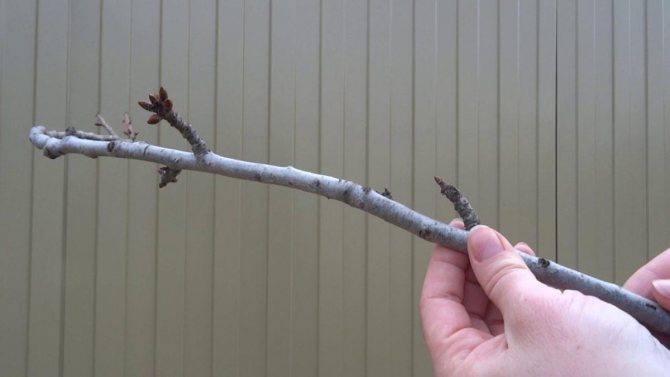

Grafting material should not have visible damage and traces of freezing. Compliance is easily checked: it is necessary to cut off the stalk and if the inner part is light green, then everything is in order. You can also simply try to bend the handle. Good flexibility of a branch indicates its suitability.
At the time of the vaccination, the stalk is cut in such a way that 2-3 buds remain on it.
Slicing time and storage
The graft is prepared in the autumn, until the temperature drops below zero. The option of spring cutting of cuttings is allowed, but it is important to be in time before the start of sap flow - swelling and budding. It is important that the tree is still in a state of winter dormancy.
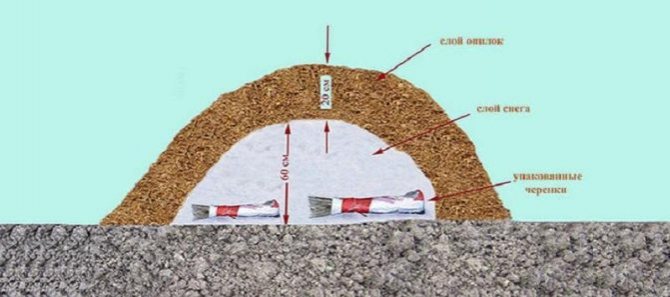

As long as the apricot sprigs are not grafted onto the stock, they must be properly stored. It will be optimal wrap the cuttings in a damp cloth or place them among sawdust, moss. The material is then wrapped in a perforated bag. The second option: the branches are buried in and stored on the site, under the snow
The main condition is to maintain a low temperature. Accordingly, the basement, cellar, refrigerator and any other places with a temperature of 0 .. + 4 degrees can be used. Once a month, the cuttings are inspected for mold or mildew.
Rules for the selection and storage of scion for peach grafting
Next, we will consider how to properly prepare the scion in the fall and save it until the spring peach grafting.
What should be a quality scion
A high-quality graft is the key to a successful vaccination!
For grafting a peach, grafts should be prepared from cuttings that need to be cut from annual (in rare cases, biennial) branches at the top of the crown with south or west side, and it is from the middle part of the shoot. The cut itself is carried out on the annual ring between the growth of the last and this year. As for their quantitative characteristics, quality grafts should be with a diameter of 5-8 mm (with a pencil) length 20-40 cm (already directly during vaccination, cut to the recommended number of kidneys - 2-3).
Cuttings should have exactly vegetative buds, rootstocks with fruit buds cannot be used.
The grafting material should look fresh, free of frost and damage. Therefore, before vaccination, it is recommended to make sure of its quality without fail. It is very simple to check this - on the cut, the cuttings should be as light (green) as possible.
Important! One of the popular ways to determine the viability of the cuttings for grafting is to bend it. If this was done easily, then the stock (cutting) is quite suitable for the procedure.
Directly during the vaccination procedure prepare the stalk (cut), leaving 2, maximum - 3 buds on it (optimally - still 2).
When to harvest and how to store cuttings (rootstocks)
Despite the fact that pruning of trees in the autumn period is undesirable, it is most convenient to harvest cuttings at this time. Therefore about scions (cuttings) it is worth taking care in advance and preparing them in the fall, before the onset of stable frosts.
However, this can also be done shortly before the actual vaccination procedure during the annual spring peach pruning.
But in this case, you need to be sure to have time before the start of sap flow (swelling and even more so bud opening), while the tree is still in the dormant stage.
Video: grafting cuttings - how, where and when to cut
Storage
After the autumn harvesting of cuttings, they must be kept in good condition until spring and prevent premature start of the growing season.
The best way to store cuttings is wrap them in a damp material (cloth)and even better moss or sawdust and put in a perforated bag.
In addition, they can be stored outside, digging in the yard (if you live in a private house), under the snow.
The main thing - keep the temperature low... Therefore, storage will go basement, cellar or refrigerator, in other words, a place where the temperature is kept in the region of 0 .. + 4 degrees.
Advice! It is imperative (at least once a month) to periodically take out and inspect the cuttings (future grafts) for damage by mold or fungi.
Rootstock types
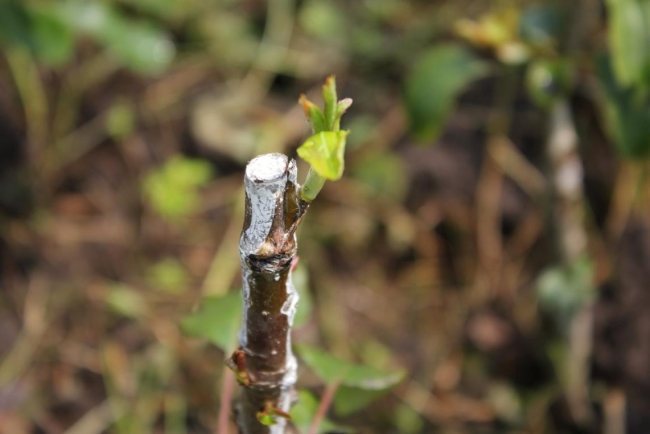

Not knowing what to plant a peach on, many gardeners often choose the wrong stock, which leads to painstaking work to an unsuccessful result. Cherry plum, apricot, plum, almond, felt cherry, blackthorn are suitable for peach grafting.
In horticulture today, 2 types of peach rootstocks are used: generative and vegetative. Generative (pome) is obtained by germinating seeds of plum, apricot, peach, cherry plum. One rootstock is obtained from one seed.
Vegetatively propagated rootstocks are obtained by dividing some parts of a suitable plant. Cuttings are taken from one fruit tree, rooted and then used as a rootstock. Practice shows that varietal seedlings are the best rootstocks for peach. For example, a peach grafted on a peach will yield large yields and fruits with high taste in the future.
On light weakly acidic drained soils, you can use a stock with medium and weak winter hardiness. In areas with a predominance of stony calcareous soils, bitter almonds can be used as scion.
What varieties of apricot are suitable for peach grafting
You can plant a peach on an apricot, since these crops are well compatible with each other. Apricot is called a universal peach stock, since many of its varieties are hardy and can grow on any soil. Peach grafting will be successful on Veteran, Juicy, Greensboro, Redhaven apricots. On apricot seedlings, trees begin to bear fruit earlier and have a stronger growth. Their growing season ends early, which allows the wood to mature well and withstand the upcoming severe frosts.
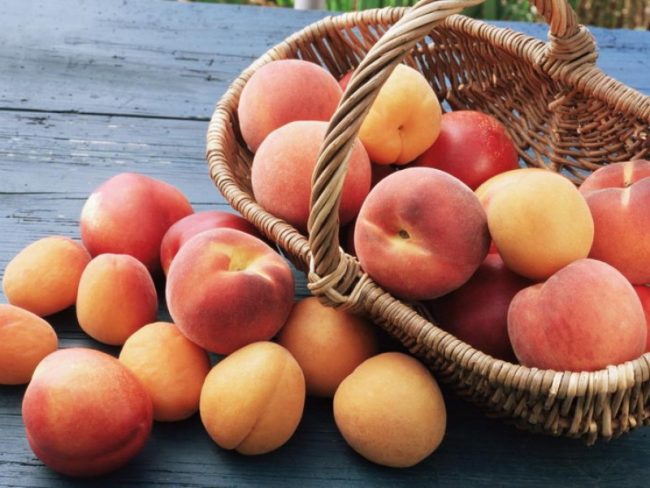

General important information about the procedure
Vaccination is a lottery in a sense. It is impossible to guarantee a positive result. To increase the likelihood of success, follow these general guidelines:
- Pre-practice to get your hand filled and achieve the necessary speed and automatism of movements.
- Vaccine in the spring, at a temperature of at least 6 ° C (in regions with a temperate climate, this is usually April, rarely - the end of March). Autumn is the most inappropriate time (it is unclear when frosts will come, only the established shoots may not survive them). In the summer (until the beginning of August), only grafting by budding in the crown is practiced.
- Get vaccinated early in the morning while the humidity is still high.
- Use only serviceable and sharpened instruments, disinfect them before starting work and after each vaccination. Do not touch the cut with your hands. Act as quickly as possible to minimize the risk of infection.
- Cook the graft in the fall. These are biennial shoots at least 5 mm thick and 25–30 cm long, with 10–12 growth buds. In winter, they are stored in a dark place at a temperature of 0–2 ° C, wrapped in a damp cloth and placed in a plastic bag.
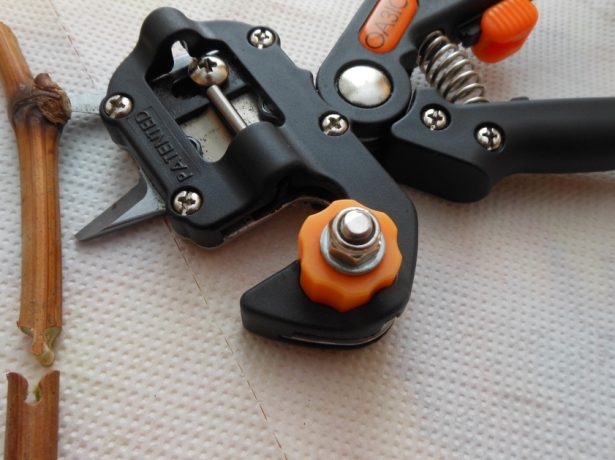

A special grafting pruner greatly facilitates the gardener's work, making the incisions of the desired shape, but it is not cheap; it makes sense to acquire it only if you are going to be vaccinated constantly
With a limited area of the site, several varieties of peach can be planted on one plum. Such a tree looks very original during fruiting. Each variety retains its characteristic taste.
Video: personal experience of grafting a peach on a plum
When vaccinated
How to plant cherries on cherries
All gardeners recognize the best time for planting fruit trees only in spring, since it is at this time that frosts end and sap flow begins. It is no secret that trees such as plum, apple and pear can withstand winter operation very well. But apricot is a very fragile crop that is afraid of frost, therefore, it is the spring grafting that is considered the best for it.
Summer grafting of apricot with fresh cuttings is only possible if done in warm regions. It is the long warm weather that makes it possible for the cuttings to take root without problems. It is best if you choose the month of June for this.
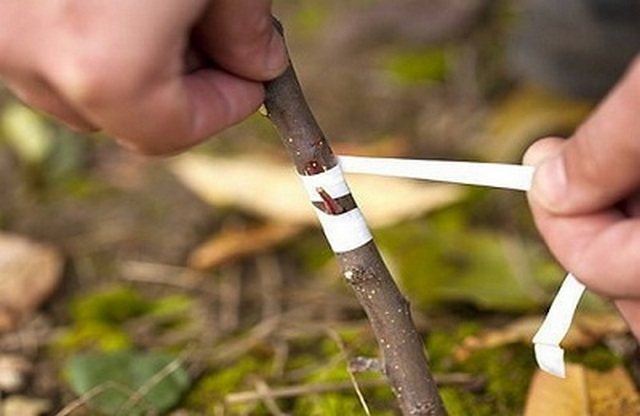

The best time to plant fruit trees is spring.
For a successful operation, you must adhere to all the rules, thanks to which the plant will be preserved and quickly take root. First of all, you need to take care of the material. Cuttings are harvested in late autumn. Then they need to be wrapped in plastic wrap and stored directly in the snow. In the spring, the workpieces should be wrapped in a damp cloth and placed in the refrigerator. Before the procedure itself, you need to soak them in water.
Peach grafting for the bark
This method is used to rejuvenate the tree. For this:
- cut off the trunk or stem branch, clean the cut site;
- a vertical incision 6 cm long is made on the rootstock and the bark is carefully separated for a better entry of the cutting;
- make an oblique cut on the handle;
- peach scion is inserted behind the bark and fixed with polyethylene or electrical tape.
Advice! If twine is used for fixation so that the grafting site does not dry out, the saw cut, longitudinal cuts and upper cuts are treated with garden pitch.
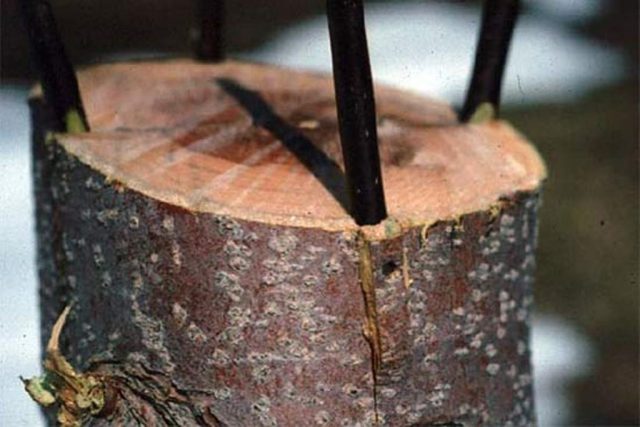

Peach grafting by budding method
Budding is a successful method to produce a healthy and fruitful tree. It is necessary:
- to increase frost resistance;
- to obtain high-quality, varietal peaches;
- for early fruiting.
Budding can be carried out in the stock and in the crown of the rootstock.
Butt grafting is suitable for young seedlings. The method is difficult, so it is not suitable for an inexperienced gardener. Execution technique:
- A shield 3 cm long is made on the handle, leaving one bud in the center.
- On the rootstock, remove the bark 3 cm long.
- The shield is applied to the incision in the rootstock and fixed with electrical tape.
- After a month, the retainer is removed, the junction of the stock and the scion is treated with garden varnish.
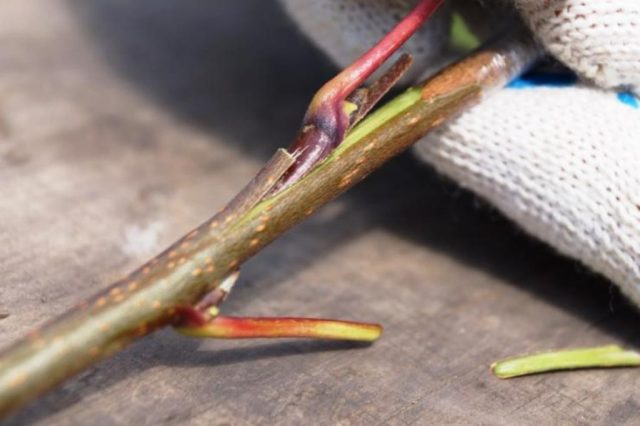

T-shaped budding in the crown of the scion - this method is used in the spring, when the air temperature warms up to + 8 ° C. The sequence of the vaccination:
- A vertical and horizontal bark incision is made on the rootstock.
- A bud with a base is cut from the scion.
- A kidney is inserted into the bark incision and the upper part is cut off.
- Above and below the vaccination site is fixed with a film.
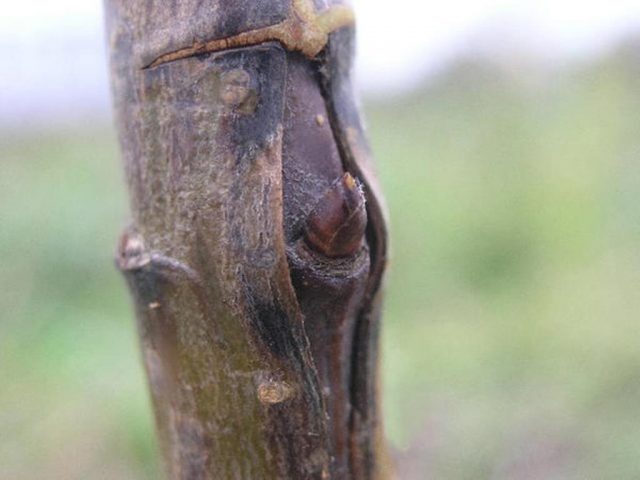

My collection
I have been engaged in peach culture for 35 years. During this time, I have tested more than 500 varieties and many rootstocks.Today, the collection contains about 100 of the best, in my opinion, varieties that have passed many years of testing in the garden. I have peach varieties of different ripening periods (early, mid-early, medium, mid-late and late), with different colors of pulp (yellow, white and red), nectarines, and fig varieties.
Friends-gardeners from different regions of the country, employees of the Nikitsky Botanical Garden and VIR helped me to collect the collection. But, perhaps, the main role in its birth was played by the doctor of agricultural sciences Vasily Andreevich Zayats, who had been cultivating peaches for 40 years, tested more than 100 varieties, published two books about peaches and nectarines. Vasily Andreevich often visited abroad, brought from there cuttings of the best varieties of peach, which he shared with me.


Newest USLION Magnetic USB Cable for $ 1 Mobile Phone Fast Charging!
Objectives and timing of vaccination
By grafting, you can try to propagate stone fruit crops. It helps to obtain trees with certain varietal characteristics, to develop a new variety, to preserve the properties of the appearance of a grafted shoot, to rejuvenate an old tree. Many peach cuttings of various varieties are grafted onto one tree. As a result, you can enjoy fruits with different flavors, moreover, space will be saved. Grafting will speed up the time of fruiting, increase the resistance of the crop to winter, pest infestation and drought. Using this method makes it possible to grow peaches in areas where this was not possible.
The timing of the procedure depends on the chosen method and the age of the tree. Manipulations are performed after constant warm weather is established. Gardeners advise against planting in the fall. There will be little time left before the onset of cold weather, so the scion will not sprout, and in winter it will freeze 100%. By means of budding, it is grafted into the bark at the beginning of summer - from June 1 to June 10, you can carry out the procedure from July 10 to July 30 or leave it at the beginning of August. For a successful engraftment, it is better if the bark leaves. It will take 14-21 days for a peach to take root in the summer.
Two failures
The first trees in my garden collection are 35 years old, but they still produce good yields. Of course, the wood is no longer the same as that of young trees. In the spring I try to carry out anti-aging pruning for them. Since then, there have been no crops in my garden twice. The first time after the winter of 2005-2006, when our temperature in Krivoy Rog dropped below -33 ° C. Then in the old garden, the fruit buds froze, the trees did not bloom in the spring, therefore, there was no harvest. In summer, peaches were fattening without fruit. The growth of branches on some trees reached two meters. Green pruning had to be done twice. I managed to protect the young garden growing nearby (the trees in it were two years old) from the cold - as far as I could, I covered them with snow even before the onset of severe frosts. The snow "coat" saved the trees from freezing. In the spring, some of them bloomed, there was also the first fruiting. In subsequent years, the gardens bore abundant fruit and gave good yields.
The second case occurred in 2011 -2012: the fall of 2011 was warm, as was January 2012, until January 19. And then in two days the temperature dropped sharply to -28 ° C. The sharp drop in temperature negatively affected both the well-being of people and the peach trees.
Rules and preparation
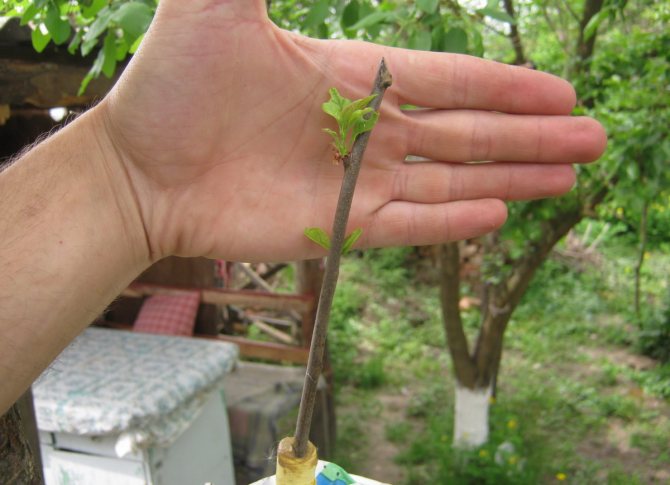

As a rootstock, you should take all the listed trees, including apricots, which are no more than 2 years old, with a trunk no more than 1 cm in diameter. It is recommended to cook chubuki for scion in autumn, before the first frosts come. This is explained by the fact that in winter some annual shoots often freeze slightly, and in early spring it will be impossible to understand this. And if you vaccinate the frozen ones, then there is no chance that they will take root. It is necessary to take a shoot, cut out its middle part 15 cm long. The diameter must be at least 5 mm.There should be about 10 healthy buds on a cut cuttings. Put in a plastic bag for the winter and refrigerate. It is desirable to store at a temperature of 0 ° C-2 ° C.
If there are a lot of cuttings, then you can leave it on the street, after sprinkling with a 30 cm layer of sawdust, and on top with snow. Sometimes the branches dry out, so before grafting, you need to check what condition they are in. The stalk should be bent, if it bends well, then the peach can be grafted. Before the procedure, it is placed in water for 2 days.
To carry out the work, you will need clean and sharp tools: a knife and a pruner. If the trees are quite old, then you can't do without a hacksaw. Additional materials will also be required:
- insulating tape;
- PVC film;
- bandage;
- paper;
- garden putty - var.
Newspapers come in handy to protect the wounded area from exposure to the scorching rays of the sun. You can use garden pruners that are specially marketed for grafting purposes. Thanks to this tool, the grooves are smooth, and the shape and size are exactly what you need.

